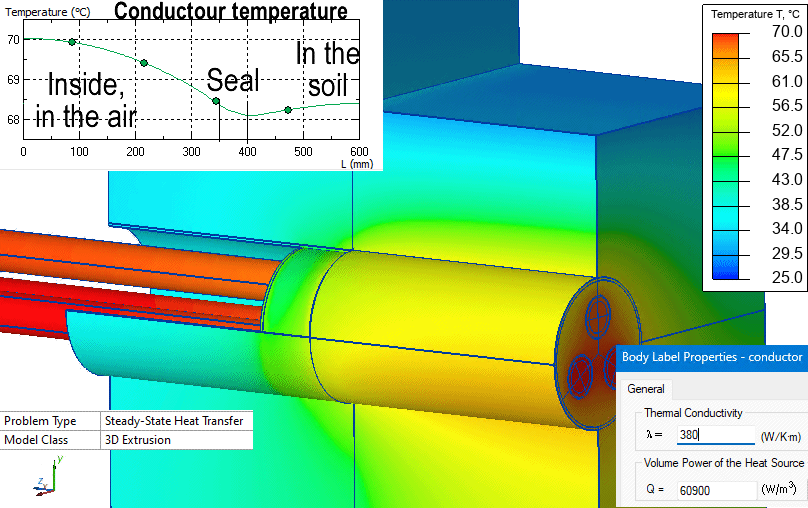Cable wall seal
QuickField simulation example
A power cable is passing through the hole in the wind turbine basement. The task is to calculate the temperature distribution.
Problem Type
3D problem of heat transfer.
Geometry
Given
Cable conductor cross section is 240 mm², resistance 0.105 Ohm/km [1], current 450 A.
Thermal conductivity of materials, W/(m·K): concrete 2; copper 380; soil 0.5; resin 0.2; PVC pipe 1; sheaf 1; steel 40.
Ambient air temperature +25°C, convection coefficient 20 W/m²K.
Inside air temperature +30°C, convection coefficient 5 W/m²K.
Task
Calculate the soil temperature profile and the temperature of the cable conductor.
Solution
The cable Joule heating power Q_l = 450² * 0.105 Ohm/1000m = 21.3 W/m
In QuickField we specify the volume power density, which is Joule heating power per 1 meter of length [W/m] divided by the conductor cross-section area [m²].
Instead of drawing each strand we draw a solid conductor with a diameter of 21.1 mm as specified in the cable datasheet [1]. Cross-section area is π * 21.1² /4 = 349.67 mm².
Volume power density Q_v = 21.3 W/m / 349.67 mm² = 60.9 kW/m³.
Results
Temperature distribution in the soil and cables.

Reference
[1] Nexans 1 x 240mm2 Versolex Orange flexible cable.
- Download simulation files (files may be viewed using any QuickField Edition).